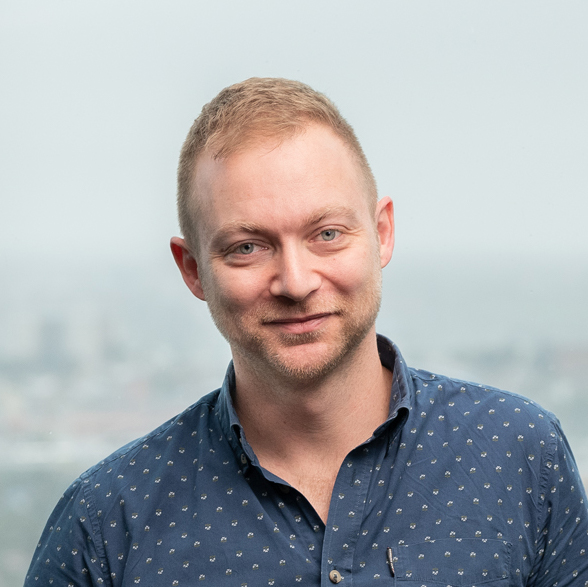Hogan laboratory: Vascular Cell and Developmental Biology
-
Head of Laboratory

Professor Ben Hogan
Research Overview
View Professor Hogan's latest PubMed publications listing here.
Understanding lymphatic vessel development using model organism genetics and genomics
Lymphatic vessels form from pre-existing vessels via lymphangiogenesis in both development and in pathological settings. Lymphatics function to drain tissue fluid and traffic immune cells, but are also utilised by tumours to metastasise to lymph nodes and secondary sites in cancer. We characterise molecular mechanisms that control lymphangiogenesis using model organisms (zebrafish and mice). We particularly use single cell genomics coupled with systems biology approaches, large scale genetic screens, CRISPR genome editing and transgenesis to characterise molecular mechanisms. Current work includes detailed genetic analysis of pathways including the CCBE1/VEGFC/VEGFR3 pathway, the Hippo pathway, the role of alternative pre-mRNA splicing and the role of the cell fate regulator Prox1.
Genetics of blood brain barrier formation in zebrafish
The blood brain barrier (BBB) separates the brain parenchyma from circulating blood and macromolecules, representing a significant challenge for delivery of therapeutics, and acting as a barrier in metastasis. The BBB is made up of tightly adherent vascular endothelial cells surrounded by essential mural cell lineages, such as pericytes. How the different cells at the BBB develop, interact and function remains far from understood. We are using single cell genomics and a forward genetic screen in zebrafish to discover new genes and molecular mechanisms that control the maturation and function of pericytes and BBB endothelial cells. This work aims to identify new molecular mechanisms and future therapeutic opportunities.
Live imaging cell signalling and molecular dynamics in vascular development
Directly observing key molecules and pathways as they act to control tissue formation, or as they drive pathological phenotypes, is a major challenge in cell biology. We are utilising biosensors that report signalling events and multiple imaging modalities to directly observe real-time molecular functions in cells in normal development and disease models in vivo. This work has uncovered unexpected mechanisms in angiogenesis during wound repair and allowed us to study cell-cell adhesion mechanics in developing tissues. We are currently diversifying our vascular biosensor tools and applying new imaging approaches to observe dynamic changes in individual molecules of interest.
Staff
 Kazuhide Okuda , Post Doctoral Fellow
Kazuhide Okuda , Post Doctoral Fellow
Elizabeth Mason, Post Doctoral Fellow, Computational Biologist
Oguzhan Baltaci, Post Doctoral Fellow
Lin Grim, Post Doctoral Fellow
Scott Paterson. Laboratory Manager, Research Assistant
Maria Rondon-Galeano, Research Assistant
Stefanie Dudczig, Research Assistant
Ryan Brown, PhD Student
Sakurako Kobayashi, PhD student
Andrea Gaudi, PhD student
Oliver Yu, Masters Student
Rhea Sonawane, Honours Student
Former Post Doctoral Fellows:
Neil Bower
Anne Lagendijk, Group Leader, IMB, UQ
Kaska Koltowska, Group leader, Uppsala University, Sweden
Ludovic Le Guen
Research Opportunities
This research project is available to PhD students, Honours students to join as part of their thesis.
Please contact the Research Group Leader to discuss your options.
Research Projects
- Molecular mechanisms controlling lymphangiogenesis
- Genetics of blood brain barrier formation
- Live imaging of cellular signalling in vascular development and disease models
Faculty Research Themes
School Research Themes
Biomedical Neuroscience, Cancer in Biomedicine, Cell Signalling, Molecular Mechanisms of Disease
Key Contact
For further information about this research, please contact Head of Laboratory Professor Ben Hogan
Department / Centre
Unit / Centre
Hogan laboratory: Vascular Cell and Developmental Biology
MDHS Research library
Explore by researcher, school, project or topic.